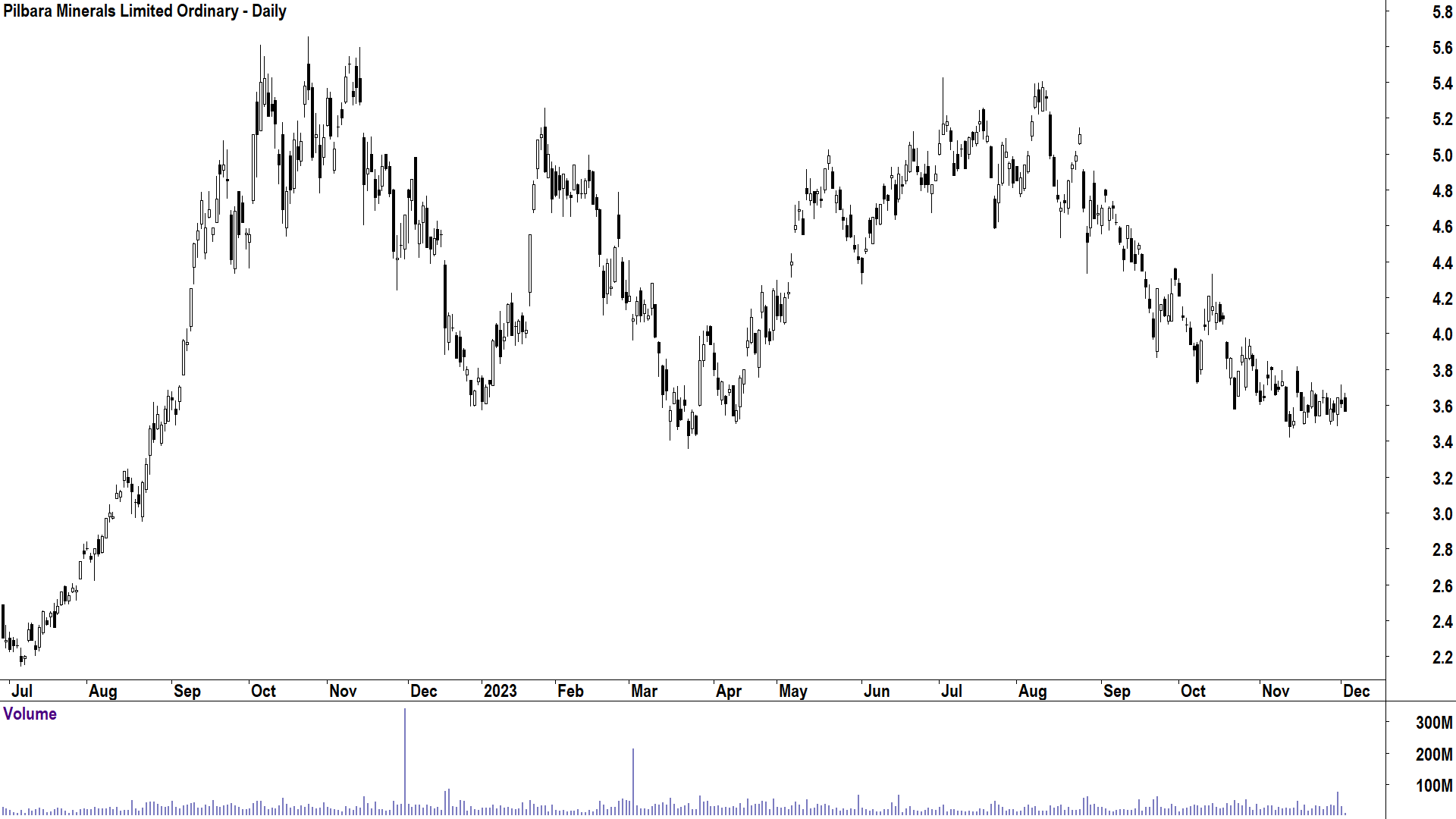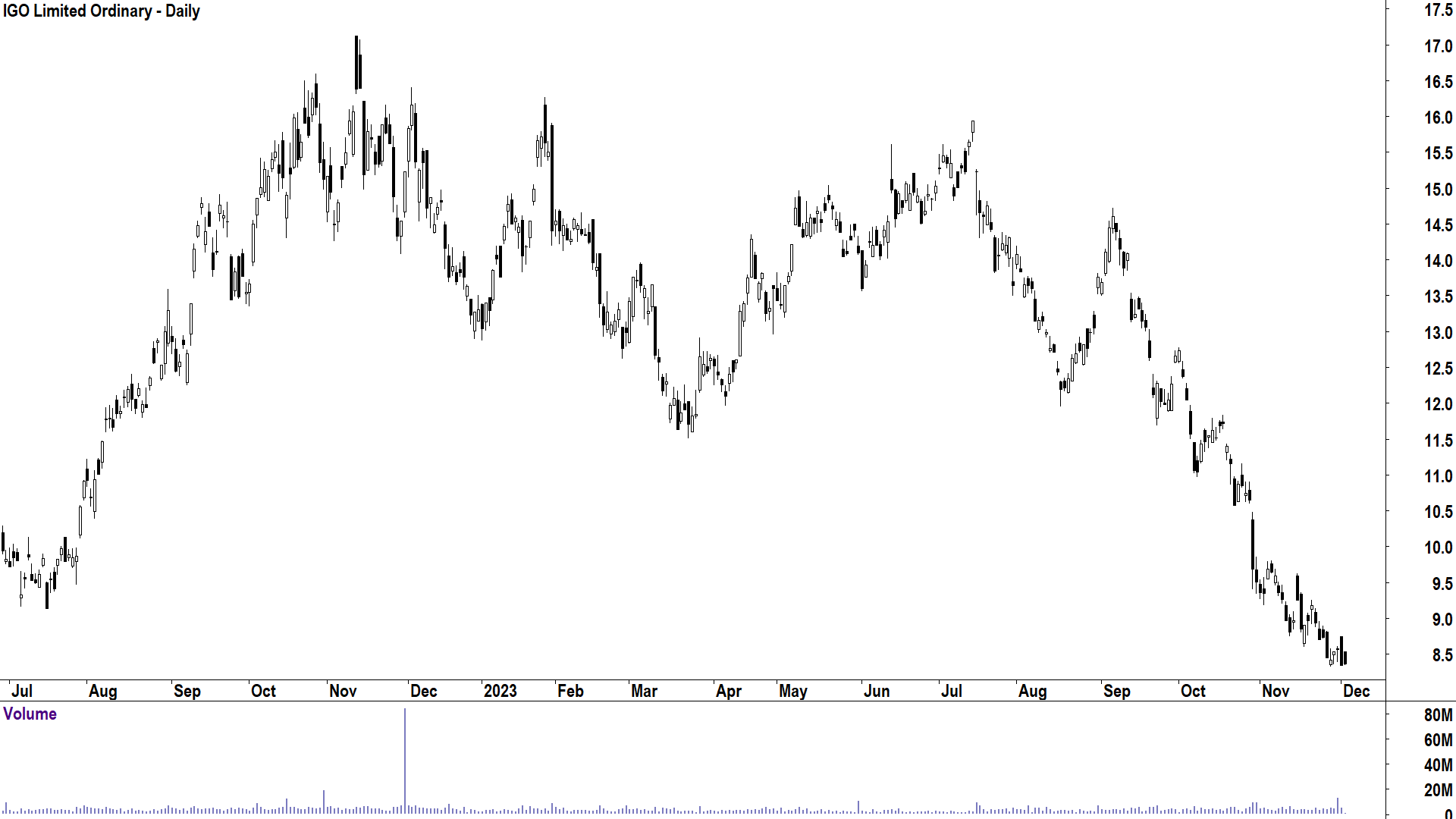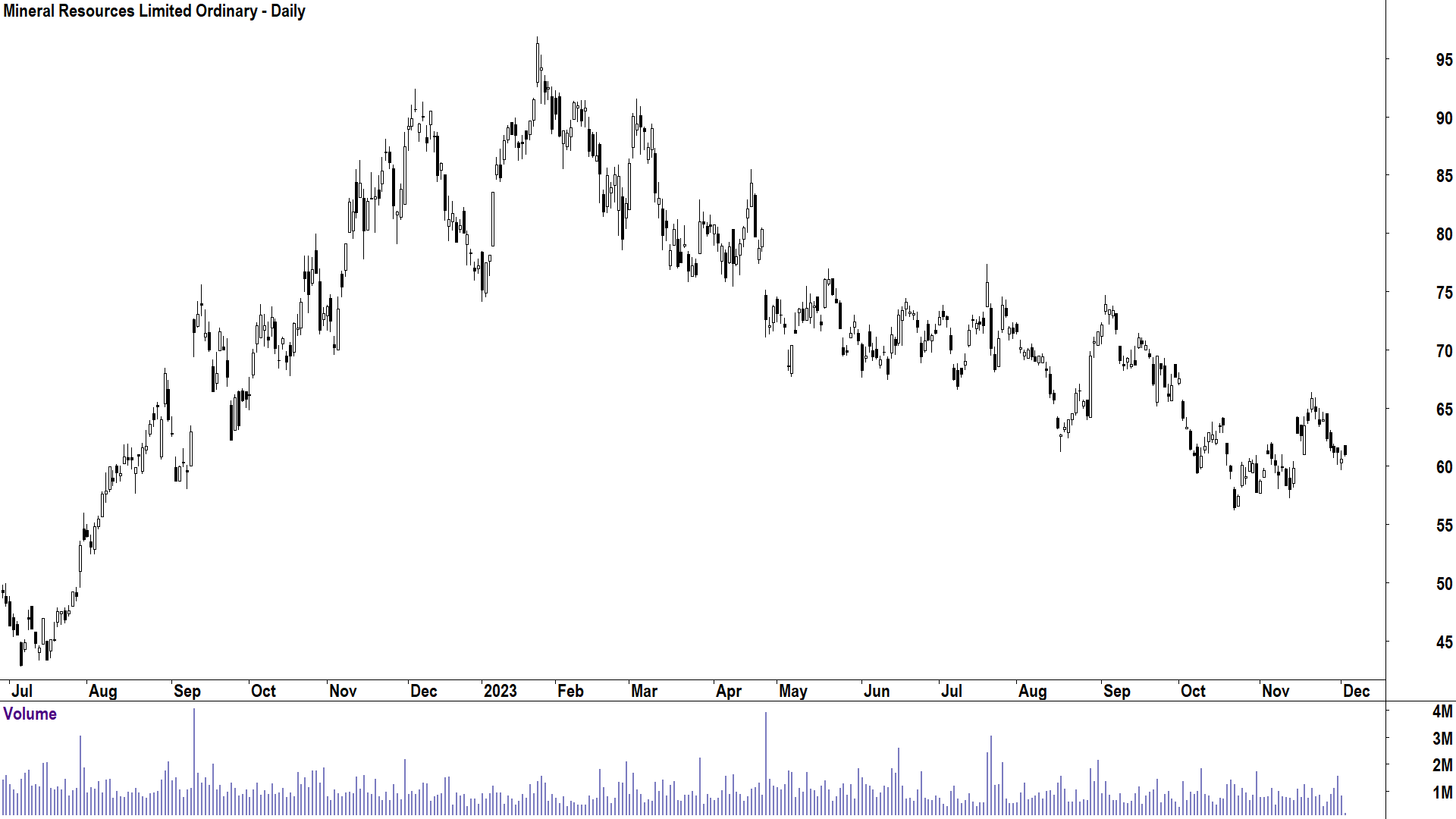“Still more downside” in lithium, UBS downgrades Pilbara Minerals
UBS is one of the most active of the big brokers when it comes to commentary on lithium minerals and ASX-listed lithium stocks. In a recent research note, they warned lithium minerals prices could “overshoot” to the downside. Since then, they’ve been absolutely correct as lithium prices have continued to tumble.
Today, UBS expounded their thinking on lithium minerals prices and downgraded heavyweight Pilbara Minerals (ASX: PLS) in the process.
Picking the bottom in lithium minerals prices
Much of UBS’s recent analysis has been aimed at formulating a likely bottom in spodumene prices from the evolving lithium minerals demand-supply environment over the next three years. Spodumene is a lithium ore produced by Australian suppliers like Pilbara Minerals, Mineral Resources (ASX: MIN), IGO (ASX: IGO), Core Lithium (ASX: CXO), and Liontown Resources (ASX: LTR).
Many lithium bulls argue there’s going to be so much demand for lithium minerals due to the switch to EVs and battery storage, that it’s just a matter of time until the current destocking cycle at Chinese battery manufacturers ceases, and prices resume their longer term uptrend.
UBS acknowledges in the longer term “It is hard to be all-out negative on a market that even on conservative estimates is expected to grow 2-3x by the end of 2030”, but in the short-to-medium term, the demand-supply dynamics aren’t so rosy.
To put some numbers to this narrative. UBS believes the demand side is likely to grow by around 25% in 2024, but supply is expected to grow 40%. The major driving force in supply is substantial expected growth in lepidolite production. China has vast reserves of lepidolite which is an alternative lithium ore to the better known spodumene.
UBS forecasts Chinese lepidolite production will increase from 130 kt this year to 189 kt in 2024, and 282 kt in 2025. It is going to be the marginal cost of production of Chinese lepidolite producers which largely determines the prevailing price for other lithium minerals in the near term.
UBS pegs this at around 80,000 RMB/t, and speculates that this could translate to a spodumene concentrate 6% price of around US$800/t. To put this into perspective, that’s roughly a little more than half of the current spodumene spot price.
It's worth considering the costs of production of local producers, and their likely profitability under such a scenario. Of course, UBS is just one broker, and there’s no guarantee that they’ll be right with their low-price projections.
Sticky situation for ASX lithium stocks
As a result of increased supply from Chinese lepidolite producers, as well as contribution from Chinese-backed African spodumene producers, and against a backdrop of “weaker demand”, UBS has downgraded their price forecasts for lithium prices by 45% in 2024, 35% in 2025, and by 23% in 2026.
According to UBS, lower lithium minerals prices will likely result in a potential halving in ASX lithium company profits in FY2025. In terms of overall share price impact, ASX listed lithium company valuations need to be pared back by “8-19%”. UBS provided specific analysis on Pilbara Minerals, IGO, and Mineral Resources:
Pilbara Minerals (PLS)

Rating: Downgraded from “Neutral” to “Sell”
Price target: $3.05 from $3.75
Earnings per share (EPS): -37.8% in FY24, -68.7% in FY25, -51.4% in FY26
Commentary: Market may respond negatively to pricing of the company’s spodumene product, especially against a backdrop of substantial capex expenditure and lower operating cash flow resulting in a lower cash balance.
IGO

Rating: Retained at “Buy”
Price target: $10.50 from $12.00
Earnings per share (EPS): -13.6% in FY24, -50.5% in FY25, -37.5% in FY26
Commentary: Still potential upside of around “20%” at lowered price target. IGO may be able to “reset the story” on incoming CEO and Cosmos (nickel) update. Key risk is how partners manage Talison and Greenbushes through the current weaker market pricing cycle.
Mineral Resources (MIN)

Rating: Retained at “Sell”
Price target: $49.00 from $53.00
Earnings per share (EPS): -39.6% in FY24, -50.9% in FY25, -32.0% in FY26
Commentary: Iron ore prices are trading around 30% above UBS’s estimate, so “improved earnings” in this division “could offset the weaker lithium business”.
Where do we go from here?
Any demand-supply environment is dynamic as participants constantly respond to their own economics and the prevailing market price.
I’ve mentioned a few times in lithium market-related articles that the cure for high commodity prices is high commodity prices. This is an old saying explaining the commodity price cycle. Basically, it means, when prices for a commodity are high, it encourages greater supply, which usually brings the market back into equilibrium and pares back prices.
The opposite is also true. A lower commodity price tends to subdue production and this can help support prices. On this point, UBS notes a supply side response to lower lithium minerals prices “should see a supply response in some form”. This could be fewer approvals for new lithium projects and the scaling back or cancellation of production increases at existing projects.
Ultimately, UBS says that Chinese production and refining capacity remains the key driving force in the lithium market.
This content originally appeared on Market Index.
2 topics
5 stocks mentioned

